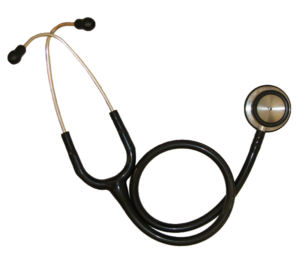 Suffering from "tennis elbow" ? A new study suggests that it may be best to just wait for the elbow to heal on its own.
Suffering from "tennis elbow" ? A new study suggests that it may be best to just wait for the elbow to heal on its own.
Tennis elbow is the painful condition that develops after "overuse" - it's a repetitive stress injury, which typically occurs in the person's dominant arm. The medical name for tennis elbow is enthesopathy of the extensor carpi radialis brevis (eECRB), or lateral epicondylitis. There are many non-surgical alternatives available, such as ultrasound, laser therapy, botulinum toxin injection, corticosteroid injection, etc., but there has been controversy over what works best in reducing pain and improving grip strength (grip strength is diminished in tennis elbow).
Researchers at Beth Israel Deaconess Medical Center compared 11 non-surgical methods of treating tennis elbow, including a placebo group (which received a "sham treatment", such as a saline injection to mimic a treatment, but really was a no treatment group. They reviewed 36 high quality studies, and found that for persons receiving only a placebo - within four weeks most reported little or no pain, and by 26 weeks 99 percent reported little or no pain. Those who received no treatment (placebo) also had the fewest side-effects (e.g. worsened pain, reduced elbow movement, skin rash, nausea, allergic reaction). The odds of an adverse effect was significantly greater in all treatment groups than in the no treatment (placebo) group.
The researchers did mention that of all the treatments, only laser therapy improved both pain and grip strength more than placebo at one month. Some treatments, such as corticosteroid injections, while relieving pain short-term (in the first month), resulted in more pain at 26 weeks than individuals who received no treatment. The researchers wrote: " At best, all treatments provided only small pain relief while increasing the odds of adverse events." They also said that perhaps some people, such as manual laborers, may benefit by short term pain relief treatments. But long-term - doing nothing is best.
From Science Daily: Tennis elbow treatments provide little to no benefit, study finds
The painful condition known as "tennis elbow" results from overuse of the tendons in the forearm, typically in a patient's dominant arm. A repetitive stress injury, tennis elbow affects not just athletes, but also tradesmen, food industry workers, manufacturers and office workers -- anyone who uses the hands and wrists for hours each day. Numerous treatments are available to the 200,000 new patients diagnosed with tennis elbow in the United States each year, but few high quality trials have compared these approaches.
In the largest analysis to date, researchers and clinicians at Beth Israel Deaconess Medical Center (BIDMC) have compared the efficacy and safety of non-surgical treatment options for tennis elbow -- also called enthesopathy of the extensor carpi radialis brevis (eECRB). Published today in the American Journal of Sports Medicine, the meta-analysis reveals that none of the 11 non-surgical treatment options -- including physical therapy, acupuncture, oral anti-inflammatory medications, local botulinum toxin injection therapy, ultrasound, laser therapy and more -- performed significantly better than placebo in addressing patients' pain and that all increased patients' odds of adverse events.
"All 11 treatment options provided only small pain relief, while increasing the odds of adverse events," said Ara Nazarian, PhD, a principal investigator in the Center for Advanced Orthopaedic Studies at BIDMC and Associate Professor of Orthopaedic Surgery at Harvard Medical School. "More than 90 percent of the patients given placebo experienced pain resolution after four weeks."
Nazarian and colleagues analyzed findings from 2,746 participants in 36 randomized, placebo-controlled studies evaluating 11 non-surgical treatment options for tennis elbow. The team looked at the treatments' effects on pain and grip strength at within four weeks of diagnosis, between five and 26 weeks after diagnosis, and more than 26 weeks after diagnosis. Only studies in which treatments given as placebo (such as saline-filled injections, inactive sugar pills or inactivated therapeutic devices) were included in the analysis -- those in which placebo was defined as no treatment or "watchful waiting" were excluded.
The team found that 99 percent of patients receiving only placebo reported little to no pain by 26 weeks after diagnosis. Next, using a meta-analysis method that allowed head-to-head comparison across treatments, Nazarian's team found that none of the treatment modalities demonstrated any significant benefit within four weeks of diagnosis.

Thanks for this wonderful Blog. Very helpful content.